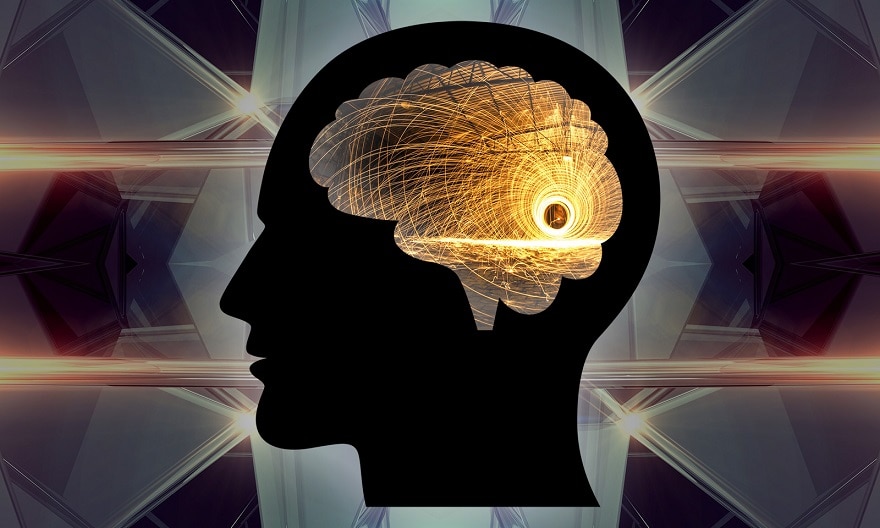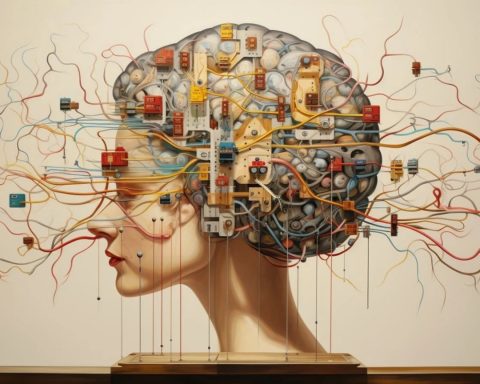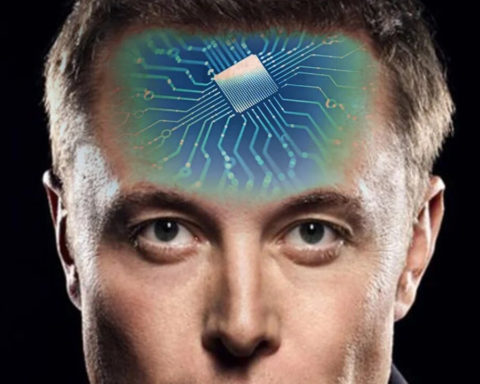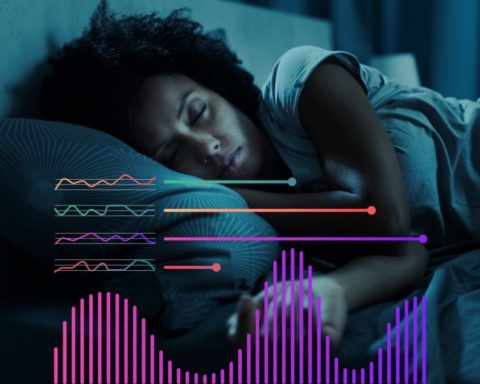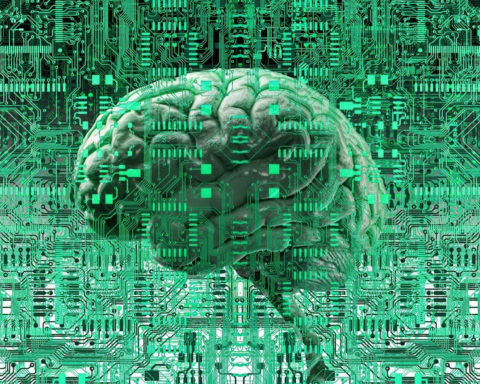Les sénateurs examinent en ce moment la proposition de loi bioéthique, texte voté en première lecture par l’Assemblée nationale en octobre 2019. Ce projet de loi apporte des éléments nouveaux dans l’encadrement des recherches dans plusieurs domaines innovants de la biomédecine dont celui des neurotechnnologies qui est en plein essor.
L’article 12 en particulier précise que :
« Les techniques d’enregistrement de l’activité cérébrale ne peuvent être employées qu’à des fins médicales ou de recherche scientifique, ou dans le cadre d’expertises judiciaires, à l’exclusion, dans ce cadre, de l’imagerie cérébrale fonctionnelle. »
Il faut souligner que comparativement au précédent article de la loi de 2011 (article 16-14 du code civil) réglementant spécifiquement l’usage des techniques d’imagerie cérébrale, le champ d’application du nouvel article 12 est élargi à l’ensemble des techniques d’enregistrement de l’activité cérébrale. De plus, il est complété par l’article 13 qui « confère au ministre chargé de la santé le pouvoir d’interdire, après avis de la Haute autorité de santé, tout dispositif de neuromodulation qui présenterait un danger grave ou une suspicion de danger grave pour la santé humaine ». Le terme de neuromodulation fait référence aux nouveaux dispositifs de stimulation électrique ou magnétique capables de modifier l’activité du cerveau chez des patients et chez des personnes saines.
Une vigilance éthique accrue s’impose en effet face au développement spectaculaire des technologies de manipulations cérébrales qui dépassent désormais le cadre de la médecine avec des applications commerciales destinées à la population en bonne santé.
Les neurotechnologies : pour le meilleur et pour le pire ?
Un pas immense dans la connaissance du cerveau a été franchi grâce aux techniques d’imagerie cérébrale par IRM qui ont révélé les extraordinaires propriétés de plasticité du cerveau humain. Au cours des apprentissages et des expériences vécues, on peut voir se modifier la structure et le fonctionnement du cerveau. Rien n’est jamais figé dans nos cerveaux, quels que soient les âges de la vie. Les connexions se réorganisent en permanence dans le temps et dans l’espace, selon notre histoire propre.
Pourquoi ne pas profiter d’une lecture illimitée de UP’ ? Abonnez-vous à partir de 1.90 € par semaine.
La découverte de la plasticité cérébrale a ouvert la voie à la possibilité d’agir directement sur le cerveau pour le réparer, en utilisant des outils technologiques pour créer de nouveaux circuits de neurones qui vont prendre le relais des circuits défaillants. Par exemple dans la maladie de Parkinson, l’implantation d’électrodes à l’intérieur du cerveau permet de lutter efficacement contre les tremblements et d’améliorer la qualité de vie des patients. Chez les personnes paralysées, des microprocesseurs enregistrent les ondes cérébrales, ce qui leur permet de contrôler un exosquelette ou un curseur sur un écran d’ordinateur, et d’interagir ainsi avec le monde extérieur. D’autres techniques utilisent des stimulations électriques ou magnétiques à la surface du crâne. Ces procédés, qui ont l’avantage d’être non invasifs, sont prometteurs dans des troubles neurologiques et psychiatriques pour lesquels les traitements pharmacologiques sont peu ou pas efficaces : hallucinations, dépression majeure, douleurs intraitables.
Si l’efficacité des neurotechnologies est avérée pour pallier les déficits des fonctions sensorielles et motrices, leur utilisation pour l’amélioration des troubles cognitifs, comme dans la maladie d’Alzheimer, est une perspective lointaine vu la complexité du fonctionnement mental. Dans l’état actuel des recherches sur la compensation des déficits cognitifs, les résultats publiés dans les revues scientifiques sont peu probants et restent préliminaires.
De nombreuses interrogations restent en suspend sur l’usage des neurotechnologies. Quelles conséquences peuvent-elles avoir sur le fonctionnement du cerveau à long terme ? Dès que l’on touche au cerveau avec des implants et des stimulations électriques ou magnétiques, même à travers le crane, un risque non négligeable est de provoquer des courants épileptiques qui peuvent détériorer les neurones. Les stimulations peuvent aussi altérer le fonctionnement normal du cerveau, ses capacités de plasticité, et porter atteinte à l’autonomie du patient en interférant avec ses pensées, ses émotions, son libre arbitre. On est loin de disposer du recul nécessaire pour évaluer les bénéfices par rapport aux risques d’effets secondaires indésirables, non seulement dans le cadre thérapeutique et encore moins dans l’utilisation des neurotechnologies chez des personnes en bonne santé.
Les promesses des neurotechnologies : pour qui ? pour quoi ?
Passer de la réparation à l’augmentation des fonctions cérébrales ne va de soi, contrairement aux discours des géants du numérique (GAFAM : Google, Amazon, Facebook, Apple et Microsoft) qui prônent les bienfaits des neurotechnologies pour maîtriser nos cerveaux, vaincre les maladies mentales et doper les capacités intellectuelles.
Raymond Kurzweil, théoricien du transhumanisme et directeur de l’ingénierie chez Google déclarait en 2016 :
« Nous utiliserons des nanorobots intracérébraux branchés sur nos neurones pour nous connecter à Internet vers 2035 […] On pourra transférer notre mémoire et notre conscience dans des microprocesseurs dès 2045. »
Si les GAFAM investissent des millions de dollars dans les neurotechnologies ce n’est pas seulement pour mettre au point des capteurs d’ondes cérébrales à des fins médicales mais aussi pour développer des applications pour le grand public, avec pour corollaire de nouvelles infrastructures de cloud pour stocker les données cérébrales et les croiser avec d’autres données personnelles qu’ils se chargeront d’exploiter. C’est déjà le cas aux États-Unis où Google gère les données de santé de millions d’individus grâce à un partenariat avec Ascension, le deuxième réseau de santé américain. En France, le gouvernement a émis le projet de confier à Microsoft la collecte des données issues des hôpitaux, pharmacies, dossier médical, centres de recherche, suscitant l’inquiétude les professionnels de santé sur les risques de passer des accords avec le privé alors que le secteur public en a la compétence.
À lire aussi dans UP’ : Nos cerveaux resteront-ils humains ?
Un champ d’application des neurotechnologies potentiellement très lucratif est celui des thérapies du bien-être. Des start-up développent des casques munis d’électrodes pour enregistrer l’électroencéphalogramme et permettre à l’utilisateur de contrôler son activité cérébrale pour réguler ses états d’anxiété, ses cycles de sommeil, ses humeurs. On trouve aussi des casques destinés à capter les émotions positives pour déguster des vins, des mets gastronomiques, choisir un parfum, etc. Ces dispositifs sont en vente libre sur Internet (à partir de 300 dollars) bien qu’aucune validation de leur efficacité n’ait été apportée par des méthodes scientifiques rigoureuses. En France, la commercialisation de ces casques n’est pas autorisée. Mais pour combien de temps encore ?
Il faut souligner que ces technologies d’enregistrement des ondes cérébrales avec des électrodes placées sur le crâne n’ont rien de nouveau. On sait depuis plus de 50 ans que les ondes de fréquence alpha sont associées à la détente et les ondes beta à la vigilance. Ce qui est nouveau, c’est les possibilités de traiter ces données en temps réel par des applications sur smartphone. Chaque type d’onde cérébrale est traduite en signaux sonores ou visuels qui renseignent l’utilisateur sur ses états mentaux pour l’aider à les réguler, contrôler sa concentration, gérer lui-même son stress ou son endormissement. Plus besoin de yoga ! L’industrie de la communication mobile ne s’y est pas trompée. Apple et Samsung incorporent déjà des neurogadgets dans leurs nouveaux smartphones pour lire les activités cérébrales.
Pour lutter contre la désinformation et privilégier les analyses qui décryptent l’actualité, rejoignez le cercle des lecteurs abonnés de UP’
La surveillance des cerveaux
Au delà des usages de santé et de bien-être personnel, d’autres applications des neurotechnologies ont pour finalité de surveiller les états mentaux dans la vie quotidienne pour les contrôler en cas de défaillance.
De nombreuses marques de voiture proposent différentes technologies pour détecter la fatigue grâce à des capteurs des mouvements du volant, de la position de la tête et aussi des yeux. Le système Eye trak permet d’analyser le nystagmus (mouvements des globes oculaires pour balayer le champ visuel) qui est un indice de l’état de vigilance du conducteur. On peut s’attendre à ce que dans un futur proche ces systèmes de détection soient complétés par des capteurs d’ondes cérébrales et généralisés à tous les types de transport.
En chine, la surveillance des cerveaux s’insinue dans la vie quotidienne, à l’école et au travail. C’est le cas d’une école primaire près de Shanghai où les élèves sont équipés de casques pour détecter leur attention en classe (https://www.youtube.com/watch ?v=JMLsHI8aV0g). Les données sont directement envoyées au professeur pour repérer les élèves indisciplinés et aussi aux parents soucieux de la réussite de leurs enfants. Dans une usine à Hangzhou, les quarante mille ouvriers portent des casques munis de capteurs pour détecter les ondes cérébrales associées à des états émotionnels qui perturbent la concentration. Les bénéfices de l’entreprise auraient augmenté significativement grâce à la réaffectation des individus distraits ou stressés dans d’autres postes de la chaîne de production. En l’absence de réglementation, les employeurs ne peuvent être qu’encouragés à utiliser les neurotechnologies pour augmenter leurs profits, d’autant que les ouvriers sont le plus souvent dans une position trop faible pour dire non. On est passé un cran au-dessus des simples caméras de surveillance. Les Chinois inaugurent un monde de contrôle généralisé des cerveaux.
La protection des données cérébrales : un enjeu majeur de bioéthique
Le développement des neurotechnologies appelle à une vigilance éthique spécifique face au risque de porter atteinte à l’intégrité psychique des personnes et d’entraver la liberté de penser. Ce risque particulier de manipulation de la personne humaine demeure en grande partie ignoré sur le plan juridique. En 2017 des chercheurs l’Institut d’éthique biomédicale de l’Université de Bâle, ont appelé à formuler des lois qui instituent de nouveaux droits humains destinés à protéger « la vie privée mentale et la liberté de l’esprit » pour relever les défis posés par les neurosciences et les neurotechnologies.
Ce sujet est au premier plan des recommandations publiées en 2019 par l’OCDE (Organisation internationale de Coopération et de Développement Économique) pour aider les pouvoirs publics et les entreprises à répondre aux questions éthiques, juridiques et sociétales posées par les nouvelles neurotechnologies. Une autre préoccupation majeure concerne l’exploitation sans consentement éclairé des données cérébrales collectées dans le cadre médical, de la vie privée ou de la surveillance de la population. Les données cérébrales font parti intégrante des données personnelles et doivent être protégées face au risque d’être utilisées par les entreprises du numérique, les publicitaires, les sociétés d’assurance ou la police.
C’est dans ce contexte que s’inscrivent les articles 12 et 13 du projet de loi de bioéthique qui définit les conditions d’utilisation non seulement des techniques d’IRM mais aussi de l’ensemble des techniques d’enregistrement des activités cérébrales sur lesquelles reposent les développements présents et futurs des neurotechnologies. Le projet de loi anticipe les dérives possibles de l’exploitation des données cérébrales en limitant leur utilisation au domaine médicale et à la recherche scientifique. Quand l’enjeu est de respecter les droits humains et de préserver l’autonomie et la liberté de penser, un encadrement juridique s’impose, à l’instar des législations internationales pour protéger le génome humain contre les manipulations pouvant nuire aux générations futures.

Cet article est republié à partir de The Conversation, partenaire éditorial de UP’ Magazine. Lire l’article original.


